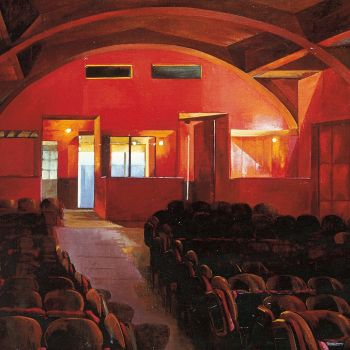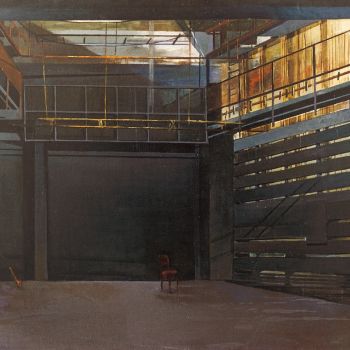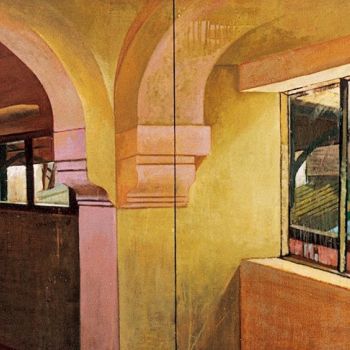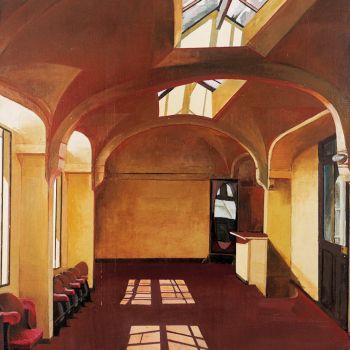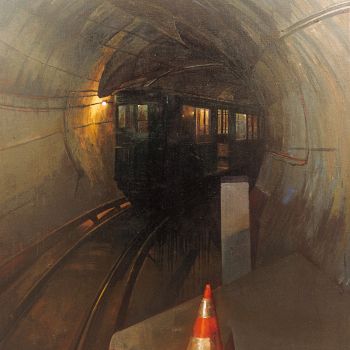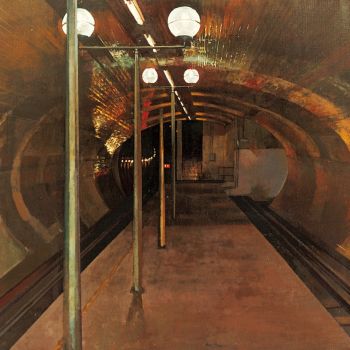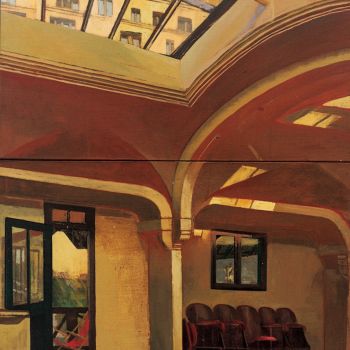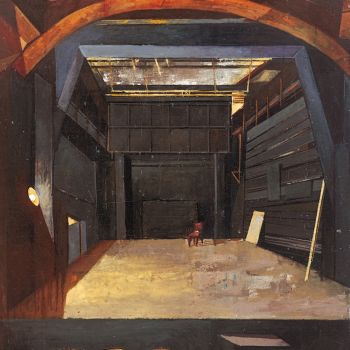We shall not cease for exploration and the end of all our exploring will be to arrive where we started and to know the place for the first time.
T.S. Eliot, Four Quartets
The Avant-garde artists at the beginning of this century, claimed mainly for authenticity as a fundamental right. However, post-modern artists may no longer rely on such a concept. The only thing they can do is to ‘re-invent’ this authenticity, since any possibility for primary conception is a priori excluded. Nowadays, every idea is featured as ‘re-used’, while ‘re-creation’ is the rule. Quoting Jean-François Lyotard, contemporary culture is massive to an extent that it excludes any kind of authentic experience, while every experience seems like a retrospection to past times and generations.
Subsequently, the Post-Modern is an integral part of the Modern, since it stems from its very function. Any given idea, even if it‘s one-day-old, must be contested. Which was the perception of space overturned by Picasso and Braques? Cézanne‘s perception of space, of course, which, back in the day, constituted the absolute deconstruction of the impressionist perception of space.
Which was the plasticity ideal overturned by Duchamp after 1912? Clearly, the need of ‚constructing‘ a painting, even when this painting is a cubist one. The ‚generations‘ keep on overturning one another with a surprisingly high speed. In other words, they keep on contesting any kind of faith in authenticity. The only case when an artwork can be considered modern is when this work has previously been post-modern, namely when it has previously undergone a process of self-dismantlement. During the Sidney Biennale, in 1986, all these questions have been raised and treated in a particularly deductive way. While Modernism drastically broke our bonds with the past, Post-Modernism returns to the past, using it as a form and wishing to find new paths to freedom through these „days forlorn“
And contemporary painting -either in Greece or abroad- should be seen exactly under this perspective, and appreciated under radically diversified criteria. Nevertheless, I wonder what would be the role of contemporary painting in our days, when other, more impressive and more credible means of image production are at our disposal. When, for instance, cinematography is particularly able to captivate an audience, using the particularly complex, „magical“ texture of its floating imagery . In the 11th Century, the exceptional achievements of Rubens were totally able to amaze a man of their times. But what about today? Haven‘t our eyes become particularly arrogant? Whoever has watched Akira Kurosawa‘s „Ran“, has been able to witness the incredible possibilities of cinematography, as regards the techniques of the „trompe-l´oeuil“ and the construction of a rather synthetic vision.
However, the question of the previous paragraph seems rather rhetorical , as it contains the answer in itself. Talking about „more impressive“ and „more credible“ means of image production, we should also take the following into account: painting, with its multiple choices, overturns any latent needs for „credibility“, proving that all „credible“ painters are bad painters or, even worse, bad users of their own imagination.
This is exactly the strongest point of the art of painting, when compared to other visual arts. And, due to this superiority, all other visual arts appear to imitate painting: A painting offers an externally static picture, which, nevertheless, contains movement, rhythm, evolution, intensity and a constant tendency to climax. One could imagine that a painting of a high artistic value is able to maintain the spectator in extasy, for as long as he or she can stand it. And paradoxically enough, a film has an end, while a painting never ends. Its concise promise lasts as long as the power of emotion and the need for an internal dialogue.
Irini Iliopoulou -the reason behind all these thoughts- could only be judged as a traditional painter, since she always starts from a given, defined subject. In this perspective, she continues the -limited but important- tradition of Greek realism, which was marked by the masters of the 19th Century, as well as by contemporary painters, such as Papaloukas, Tsarouchis, or even Moralis and Tetsis, to a certain extent. The most interesting points of this painter‘s work are the way she approaches reality, what she retains from it, the extent to which she takes History of Art into account, as well as the way she decomposes this reality, in order to come to a result which is completely different than the initial stimulus. Her cοlourist skills allow her to move in a fabulous, rosey atmosphere of fairytales, which may suddenly turn into a nightmare. Her artworks are full of an innate anxiety, which is here to underline that things could be, actually, different. Οbserve these terrestrial angels breaking into the cold, humid rooms and their wings reflecting on the door or the window handles. Observe the interiors of the abandonned theatre of Le Vieux Colombier, and their triumphant, yet cruelly awful spotlights, where red and grey tones seem to prevail, tracing paths towards infinity. Iliopoulou has managed to depict the peculiar atmosphere of a truly magical place such as the theatre. Finally, observe these trains filling these dark, obscure tunnels with a light almost hysterical in its absoluteness.
Iliopoulou has been trained by Cremonini, to whom she owes many elements of her style. But she has also managed to create her own, personal artistic langage, which is interesting, passive and, at the same time, very ‚suspicious“. Because this is where painting leads us nowadays, if I may come to a conclusion related to the thoughts I expressed in my introduction, on the issue of authenticity and „originality“ in Art. What we are looking for, finally, is a creation in which technique is in perfect harmony with spirituality or imagination.
There are -and there were- a lot of good techinicians in this world, who are just reproducing acquired solutions and produce „works of art“ for their public, who create aesthetical objects.
Therefore, I ask you: is that enough?
DUSSELDORF 10-2-88
MANOS STEFANIDIS


